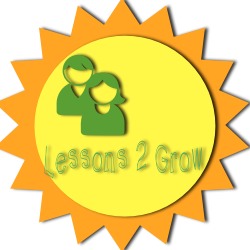A Try, Teach, Tour Mindset
 Field trips can be wonderful ways to teach kids in a fun, engaging environment. Most of the time teachers "inherit" field trips from their predecessors which is extremely helpful since it frees you to focus on developing your teaching style. However, in the last few years there have been many changes such as common core standards and next generation science standards. Perhaps it's time for you to locate new exciting places to take your class. If so, keep reading because this is the second step in my series about Teaching with Field Trips. The four steps are:
Field trips can be wonderful ways to teach kids in a fun, engaging environment. Most of the time teachers "inherit" field trips from their predecessors which is extremely helpful since it frees you to focus on developing your teaching style. However, in the last few years there have been many changes such as common core standards and next generation science standards. Perhaps it's time for you to locate new exciting places to take your class. If so, keep reading because this is the second step in my series about Teaching with Field Trips. The four steps are:
1. Brainstorm with a Partner-Plunge
2. Research with a Try-Teach-Tour Mindset
3. Evaluate Cost vs. Compensation
4. Teach Kids to Explore & Explain
The second step is probably the most exciting part of the process. You already took the plunge and created a list of possible field trips. Now, you get to go out there and experience them. As with the first step don't get hung up on the cost, we'll go into that in step 3. Who you take with you depends upon how you want to experience the trip. One trip was with my husband and our dog to a local beach. Another was with a group of teacher friends, not necessarily from the same grade level or school site. And yet another was with a friend and her son. You could even go solo if that's what works best for you. My only recommendation is to be with people who understand that you are looking at the educational value of that location.
Use Guiding Questions:
 Guiding questions will help you determine if this particular location is a potential trip for your class. In my opinion the most important questions are: How does this fit into my curriculum? and Is this age-appropriate? A field trip that is all fun and fluff is very entertaining but would the students learn something from their excursion? If not, you might consider recommending families to go to the location for a fun outing rather than using precious resources on bus costs, etc.
Guiding questions will help you determine if this particular location is a potential trip for your class. In my opinion the most important questions are: How does this fit into my curriculum? and Is this age-appropriate? A field trip that is all fun and fluff is very entertaining but would the students learn something from their excursion? If not, you might consider recommending families to go to the location for a fun outing rather than using precious resources on bus costs, etc.
One of the trips I explored was a location that I had been to multiple times in my life--Natural Bridges State Beach in Santa Cruz, CA. The state beach that I visited was even the location I had been to as a child, a young adult, and a parent but...I had never been there in my teacher role which made it a totally different experience. I started off by stopping at the ranger's station and gift store asking specific questions about field trips. I had already completed a pre-trip research on their website but I was thinking of adding a beach clean-up. I learned that the rangers are very accommodating in adding a service component to a class visit. I also learned some interesting predator-prey information about the wildlife in the park. After visiting the ranger, I went off to see EVERYTHING--the trails, the beach, the rock formations, the tide pools.
I left that day full of inspiration on how this beach fits into curriculum and what I could teach either before or after the trip which I arranged into a lesson about mud stone, butterflies, and tide pools which you can find here...

On the flip side, a second trip to a national park was a beautiful day out with friends that did not spark my teacher interest. I enjoyed the trip tremendously it just wasn't a location that fit into my curriculum or standards as well as I thought when brainstorming. In hindsight it's better that I researched prior to taking a class. This location will become a recommendation of a place that parents can bring their children during vacations. That's the value in using a Try-Teach-Tour mindset--you get to visit and experience locations to see if they fit into your classroom goals. After going on several trips you can then put all your gathered information together to narrow down to a location by determining the value of taking a class. That's what we'll explore in Step 3: Teaching with Field Trips.





